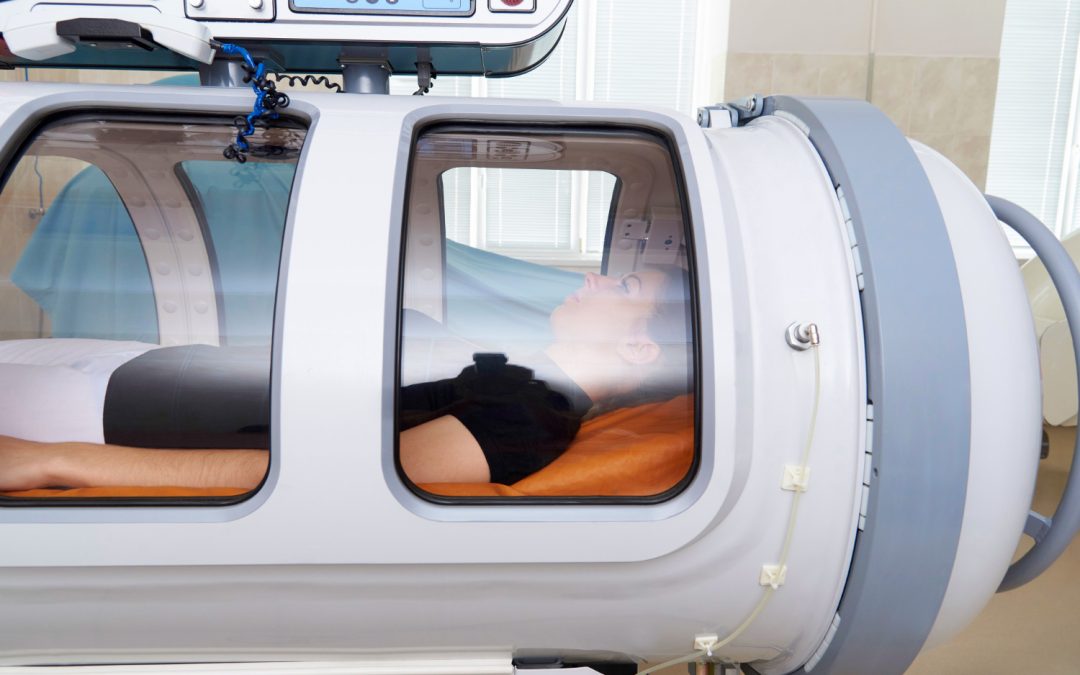Hyperbaric Oxygen Therapy (HBOT) offers a fascinating way to aid healing through science. By combining pure oxygen with increased atmospheric pressure, this therapy boosts the body’s ability to heal various conditions. Though it may sound high-tech, it’s based on simple principles that harness the power of oxygen to aid recovery and repair.
Many medical conditions can benefit from HBOT. Whether dealing with hard-to-heal wounds or addressing the effects of carbon monoxide poisoning and decompression sickness, HBOT is a vital tool in the medical toolkit. It uses enhanced oxygen delivery to desperate tissues, jumpstarting the body’s natural healing processes.
Safety is a top priority in HBOT. With strict protocols guiding each session, the therapy ensures patient comfort and security. Trained professionals oversee everything, debunking any myths about risks associated with this innovative treatment. By understanding how HBOT works and how safety is managed, patients and caregivers can confidently explore the benefits of this therapy for better health outcomes.
The Science Behind HBOT
Hyperbaric Oxygen Therapy (HBOT) harnesses the natural power of oxygen, enhanced by the environment in which it is administered. The science behind it revolves around the principle of pressure. In an HBOT session, patients breathe pure oxygen while inside a chamber with higher atmospheric pressure. This elevated pressure, usually equivalent to diving about 33 feet underwater, allows the body to absorb more oxygen than it would at normal air pressure levels.
This excess oxygen is crucial in promoting healing. Here’s how it works:
- Increased Oxygen Saturation: The added pressure helps dissolve oxygen directly into the blood plasma. This oxygen-rich plasma penetrates deeply into cells and tissues, even those with limited blood supply due to injury.
- Stimulating Blood Vessel Growth: Oxygen fuels the growth of new blood vessels (angiogenesis), which is important for delivering nutrients and oxygen to heal wounds.
- Boosting Collagen Production: Oxygen aids in collagen formation. Collagen is a building block of tissue; thus, making wounds heal faster and stronger.
- Combating Infection: Many harmful bacteria cannot thrive in oxygen-rich environments, so HBOT helps combat stubborn infections by creating an unfavorable environment for bacteria.
This scientific process not only accelerates healing but also supports the body’s ability to recover and fight infections more effectively.
Medical Conditions Benefiting from HBOT
Hyperbaric Oxygen Therapy is a versatile treatment used to manage several medical conditions effectively. Many patients undergo HBOT for non-healing wounds and infections that refuse to respond to traditional treatments. Conditions that benefit include:
1. Non-Healing Wounds: Diabetic ulcers, pressure sores, and surgical wounds fall into this category. These wounds often suffer from poor blood flow. HBOT enhances circulation and oxygen delivery, prompting faster healing.
2. Infections: HBOT fights off stubborn infections, particularly anaerobic bacteria that thrive without oxygen. By flooding tissues with oxygen, it hampers bacterial growth and aids the immune system.
3. Carbon Monoxide Poisoning: In cases of carbon monoxide exposure, HBOT rapidly replaces carbon monoxide with oxygen in the blood, reducing the toxic effects and preventing lasting damage.
4. Decompression Sickness: Often experienced by divers who surface too quickly, this condition benefits from HBOT as it helps dissolve gas bubbles in the bloodstream, alleviating symptoms swiftly.
Understanding how HBOT manages these conditions reveals its critical role in both acute and chronic medical scenarios. The therapy’s ability to deliver oxygen to compromised areas marks its significance in modern medicine, providing hope to patients with limited treatment options.
Ensuring Safety in HBOT Sessions
Safety is a pivotal aspect of every Hyperbaric Oxygen Therapy session. Before a session begins, patients undergo thorough evaluations to ensure they are suitable candidates. Centers follow strict protocols to maintain safety, including rigorous checks of hyperbaric chambers for proper function and cleanliness.
Specially trained professionals monitor each session closely. They maintain communication with patients through intercom systems, ensuring comfort and addressing any issues that arise. Constant monitoring of the chamber pressure and oxygen levels guarantees that they remain within safe ranges. These professionals can adjust parameters quickly, tailored to each patient’s needs and response.
Safety gear, such as cotton clothing to prevent static electricity, is standard. Patients also receive clear instructions to avoid flammable materials, reducing fire risk. Sessions are conducted with emergency preparedness in mind, with backup systems ready to operate if technical issues occur.
By adhering to these safety measures, centers help ensure that patients can focus on healing. The meticulous attention to detail and constant vigilance mean that HBOT is carried out with minimal risk, fostering an environment of trust and effectiveness.
Addressing Common Safety Concerns
Despite its benefits, some people have concerns about the safety of HBOT. A common myth is that the pressure in hyperbaric chambers poses significant risks. In reality, chambers are designed with advanced technology that regulates pressure changes gradually, minimizing any discomfort or danger.
Another misconception is the risk of oxygen toxicity. While breathing pure oxygen for extended periods can be harmful, HBOT sessions are carefully timed. These sessions include regular breaks to reduce any risk, under the watchful eye of professionals who ensure safe oxygen exposure limits.
Regulatory bodies closely monitor HBOT facilities, setting high standards for operation. Facilities adhere to guidelines from organizations like the Undersea and Hyperbaric Medical Society, which help set the bar for safety and efficacy.
Patient experiences further dispel myths. Many patients report a safe and comfortable experience, finding reassurance in the stringent protocols and dedicated staff. When patients have accurate information, they feel more comfortable and able to enjoy the full benefits of HBOT.
Conclusion
Hyperbaric Oxygen Therapy stands as a testament to the power of oxygen and pressure in healing various medical conditions. The science behind it illustrates how increased oxygen levels can accelerate recovery and improve outcomes. As an effective treatment for non-healing wounds, carbon monoxide poisoning, and decompression sickness, HBOT fills an important niche in medicine.
Safety remains a cornerstone of its practice. Robust protocols, constant monitoring, and advanced technology ensure that patients are treated in a secure environment. By understanding and addressing common concerns, individuals can approach HBOT with confidence.
If you’re considering how Hyperbaric Oxygen Therapy could benefit you, turn to Founding Fathers Hyperbarics. With detailed attention to patient safety and care, our center offers a supportive place for your healing journey. Contact us to discuss your options and see how HBOT therapy can be a part of your health plan.

